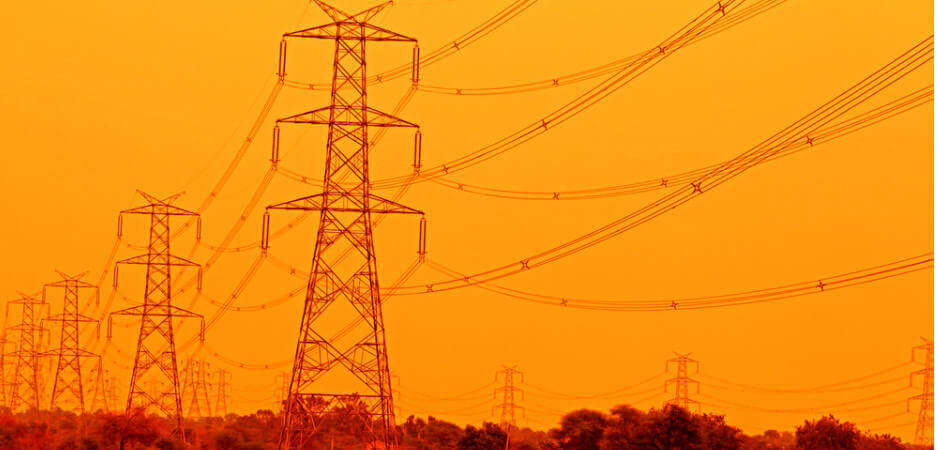An accident at the Unchahar plant in Uttar Pradesh raises questions about safety and competence of India’s National Thermal Power Corporation.
In December 1984, some 40 tons of lethal methyl isocyanate gas leaked from a production plant owned by Union Carbide Corporation (UCC), a US-based pesticide maker, exposing over half a million people in the Indian city of Bhopal to deadly toxins. The damage caused earned it the title of the world’s worst industrial disaster, known as the Bhopal gas tragedy. Estimates of the death toll vary: While the Indian government count lists 5,295 deaths, the unofficial number is pegged at over 20,000 over the years, and people in Bhopal continue to reel from the impact of the disaster to this day. The tragedy exposed the darker side of India’s safety and security norms at industrial facilities.
One would think that lessons have been learned. However, some 25 years after Bhopal, state-owned Bharat Aluminium Company (Balco) saw a chimney collapse during the construction of its power plant in the state of Chattisgarh, killing 45 people. Now, another industrial disaster has taken place, this time at the facility of India’s largest power producer.
A boiler blast at the Unchahar plant run by the National Thermal Power Corporation (NTPC) on November 1 took the nation by storm. The accident at Unit 6 reportedly happened owing to the accumulation of ash beneath the furnace, creating a pressure zone that caused the boiler to burst. According to a report by the Times of India, fans inside the boiler that maintained pressure could have also malfunctioned. Unchahar plant’s Unit 6 produced 500MW of electricity and had started operations, after many hiccups, in September. The plant supplies electricity to nine states.
The Big Questions
The death toll from the blast has risen to 37, with a further 100 injured. Some eyewitness accounts claim that at least 70 people could have died as a result of the explosion. Family members of some workers at the plant are claiming that their loved ones are still missing, though NTPC has denied the charge. According to media reports, a preliminary probe following the blast found that the unit where the boiler was placed had been running at half capacity, and the engineers should have been aware of any impeding problem.
The state of Uttar Pradesh has called for a government inquiry into the blast, and the Power Ministry has said that it will submit its report within 30 days from the date of order. The bureaucratic process for ascertaining safety transgressions is cumbersome, which explains the generous timeline for conducting the inquiry. According to the Electricity Act, 2003, the government will appoint an electrical inspector to report on the causes of the accident and compliance with safety regulation. The inspector has the legal power equivalent to a civil court to force the attendance of witnesses.
The biggest question arising from the tragedy is whether the safety and security norms followed by NTPC were up to the mark, despite many reports of issues with the boiler prior to the accident. While the company has called this incident “unfortunate” and initiated an inquiry, there are reports that it could have overlooked certain production problems.
The accident at Unchahar was preventable: Boilers are designed to give a warning if pressure builds up, meaning that regular inspections could have averted the tragedy. The boiler in Unit 6 was new, which brings its quality into question. According to the Times of India, engineers were working on fixing the boiler’s furnace an hour before the incident happened. NTPC reportedly kept the unit functioning despite concerns in order to meet targets for its 42nd “raising day,” when all its power plants would function to full capacity.
The regulatory process at state enterprises is far from transparent, and there have been calls in the past to allow third parties oversee regulation. The coal-powered NTPC Unchahar plant isn’t the only place where lax regulatory procedures have affected employees. In January this year, a contract worker died after fire broke out from an electric short circuit at a power plant in Bharat Petroleum Corporation Limited (BPCL) Kochi facility, another state-owned company.
According to a report by The Wire, countries such as Finland, Germany and Japan have managed to reduce fatal occupational accidents by 60-70% within the past few decades. In the case of boiler-related incidents, it was easier to prevent the situation as deficiencies can be detected beforehand and dealt with. But to reach the level of Germany or Japan, India needs to first refine the regulatory process, which seems to be lacking meticulous observation.
Reducing Coal Dependency
As part of the Paris Climate Agreement of 2015, India has committed to reducing its dependency on coal and deriving 40% of its electricity capacity from non-fossil fuels by 2030. It revised the target this year to 57% energy from renewables by 2027. The country has already cancelled 13.7GW of planned coal projects as it shifts focus toward solar energy generation. A transition to renewable energy is beneficial not just for the environment, but also for the workers: Renewable energy plants reduce risk of death or workplace injury by minimizing the process of energy extraction, according to a study by the Medical College of Wisconsin.
However, India’s largest thermal plants are still coal-powered. NTPC operates India’s largest power station in Vindhyanchal, in the state of Madhya Pradesh, which has an annual capacity of 4,760MW. The Unchahar plant alone produces over 1,500MW of electricity annually. NTPC has 20 coal power stations across India.
The recent accident should also make NTPC reconsider its stance on pollution. Despite the installation of solar and hydroelectric facilities across the country, India is still heavily reliant on coal. Even in countries such as the US, where the government still favors coal, companies are turning to shutting down coal-powered plants. There have been calls to close NTPC’s plant in the town of Badarpur in Delhi, which heavily contributes to the pollution in the capital. The plant generates up to 90% of major particulate matters and pollutants in the air and contributes just 8% to Delhi’s electricity generation. It is reportedly the world’s most inefficient plant.
NTPC has also been accused of not meeting government pollution parameters. Despite heavy pollution, NTPC has remained quiet on the status of the Badarpur plant, like many others. While the company has pledged to phase out some old coal-powered plants, it is building new facilities on those sites.
The Unchahar plant accident has brought up concerns regarding the safety of equipment at other NTPC facilities. Apart from regulatory snags, the number of certified professionals versus the number of boilers in India also cuts a sorry figure: According to a report by The New Indian Express, there are only 10 officials to inspect 3,000 boilers in the state of Karnataka. This puts the lives of workers at risk every single day, with a lack of regular checks of plant equipment that is becoming rapidly outdated. This latest incident is a wakeup call for India’s industry, which, instead of adding to the tragic death toll from numerous accidents, should work to improve safety measures and explore alternative sources of energy that may better serve not only their employees and customers, but also the environment.
*[Note: This post has been updated to include the latest figure from the accident’s death toll as 37.]
The views expressed in this article are the author’s own and do not necessarily reflect Fair Observer’s editorial policy.
Photo Credit: SARIN KUNTHONG / Shutterstock.com
Support Fair Observer
We rely on your support for our independence, diversity and quality.
For more than 10 years, Fair Observer has been free, fair and independent. No billionaire owns us, no advertisers control us. We are a reader-supported nonprofit. Unlike many other publications, we keep our content free for readers regardless of where they live or whether they can afford to pay. We have no paywalls and no ads.
In the post-truth era of fake news, echo chambers and filter bubbles, we publish a plurality of perspectives from around the world. Anyone can publish with us, but everyone goes through a rigorous editorial process. So, you get fact-checked, well-reasoned content instead of noise.
We publish 2,500+ voices from 90+ countries. We also conduct education and training programs
on subjects ranging from digital media and journalism to writing and critical thinking. This
doesn’t come cheap. Servers, editors, trainers and web developers cost
money.
Please consider supporting us on a regular basis as a recurring donor or a
sustaining member.
Will you support FO’s journalism?
We rely on your support for our independence, diversity and quality.







